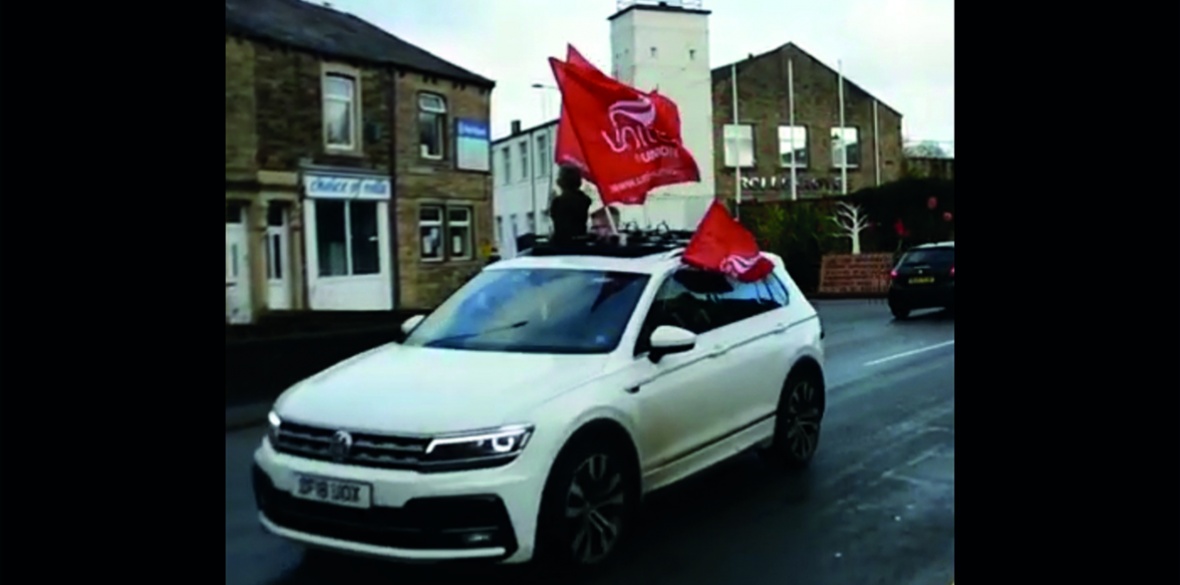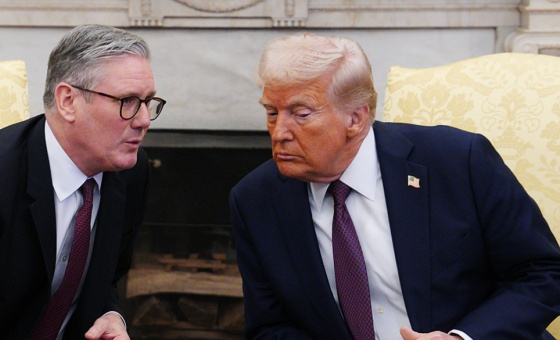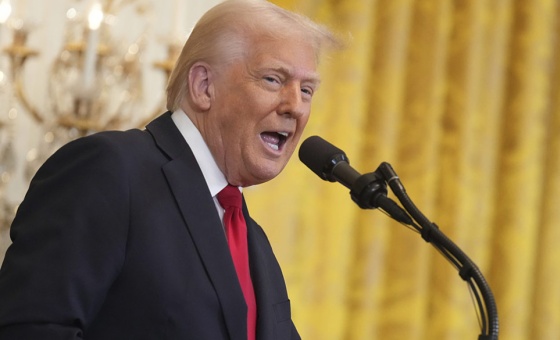This is the last article you can read this month
You can read more article this month
You can read more articles this month
Sorry your limit is up for this month
Reset on:
Please help support the Morning Star by subscribing here
A CAVALCADE of more than 200 cars wound through the east Lancashire Pennines on Saturday in support of Rolls-Royce workers who have begun their fifth week of strike action.
More than 500 workers at a closure-threatened factory in the town of Barnoldswick are fighting for their jobs and communities.
They produce precision blades for Rolls-Royce jet engines, but Rolls-Royce wants to transfer this work overseas, including to Singapore.
The workers, who are members of Unite, are resisting closure with targeted strike action, which involves the withdrawal of labour by one key group of workers at a time.
This tactic maximises disruption to production while enabling the union to pay wages and “stop the bosses starving us back to work,” as one striker told the Morning Star.
Support for the strike is spreading across north-west England.
Unite regional officer Ross Quinn said: “The factory has been at the site since 1943, when it made blades for jet engines which helped beat fascism. The workforce are proud of that and are not going to let it go.”
Heavy redundancies have already shrunk the workforce.
“Two years ago, there were 1,170 employees,” Mr Quinn said. “Today, there are 510 – and these are highly skilled jobs.”
Some of them live in Barnoldswick, the small town next to the site, while others have homes in neighbouring communities including Colne and Burnley.
Mr Quinn added that for every job at the factory there were four or five others in its supply chain.
“Rolls-Royce has estimated that the factory’s economic impact on the north-west region is £1.1 billion,” he said.
The workforce has made a video entitled The Battle for Barnoldswick, which can be found on YouTube.
A striker who took part in the convoy told the Star: “It was absolutely fantastic. There were people from the communities as well as strikers.
“It was a clear demonstration of support from across the north-west. It was moving to see people along the streets waving and clapping.”
The strike action began after a 94 per cent vote in favour.
Mr Quinn said: “The workers are not going to let this factory disappear without a fight. They have got that mindset now and they are going to keep it.”









